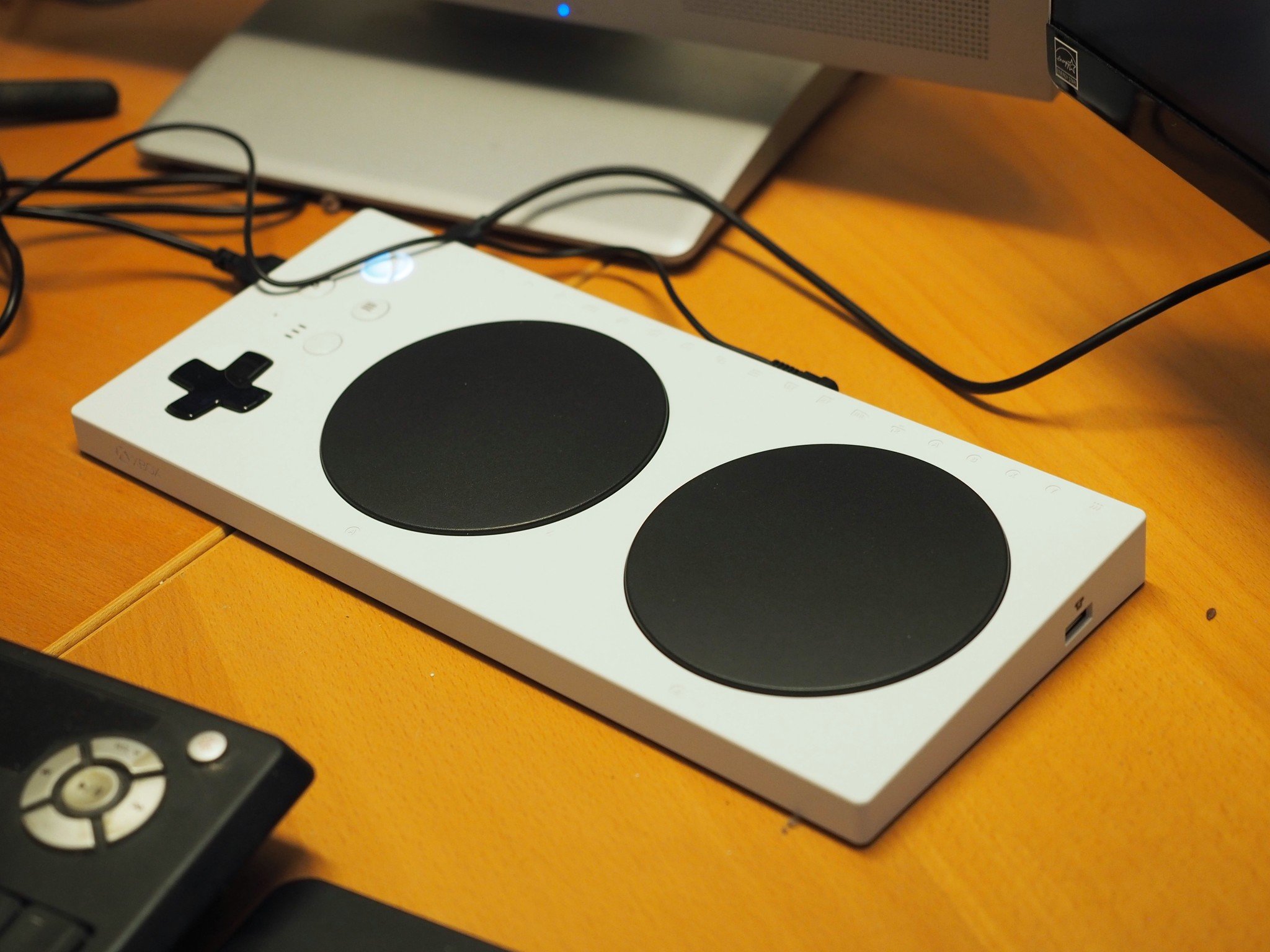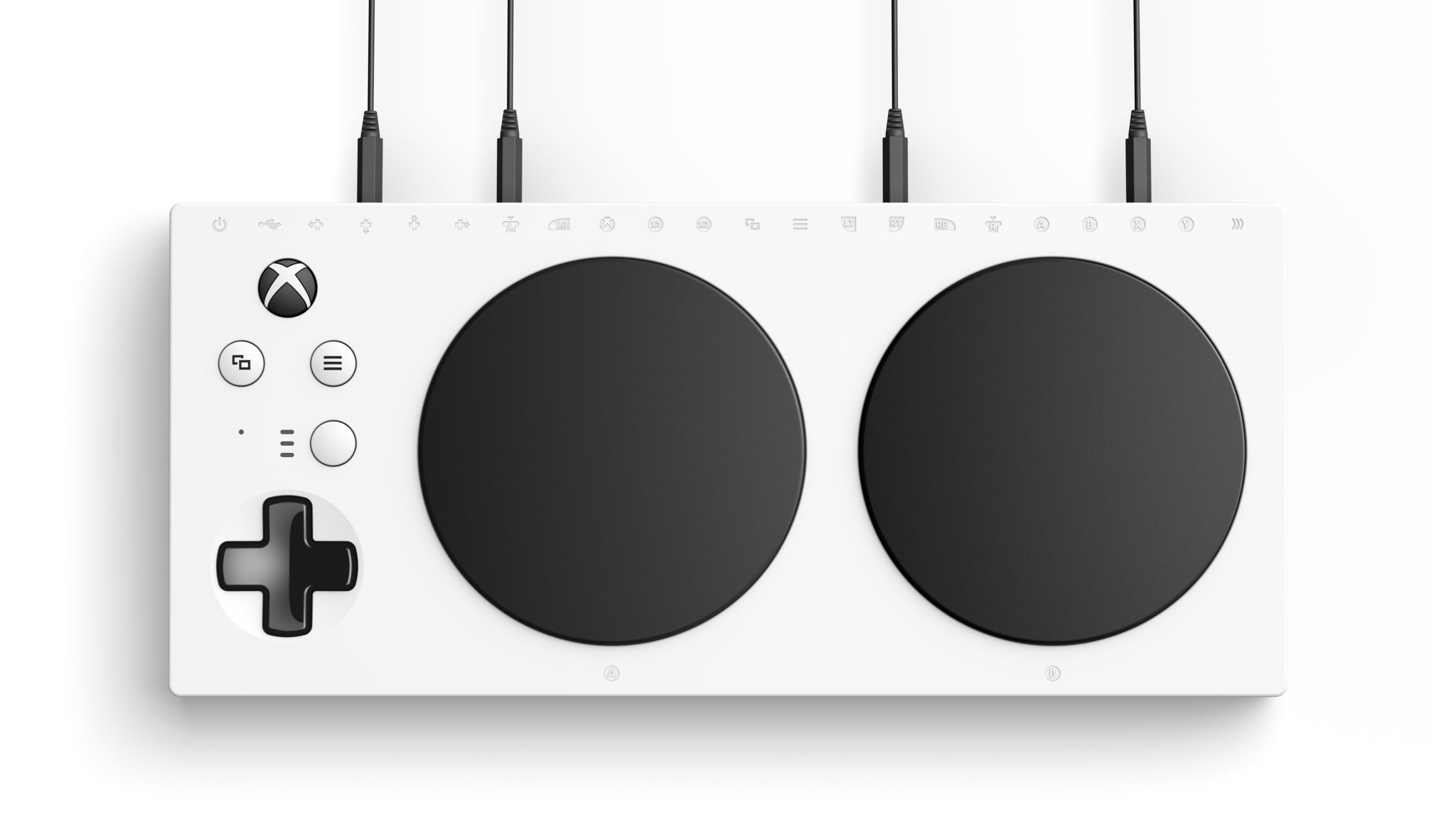How Microsoft's Xbox Adaptive Controller changed the game for one man with disabilities
A few months ago, we set out to discover how the Xbox Adaptive Controller can actually adapt to its users, leading a new charge for increased gaming inclusion.

In late 2018, Microsoft offered us a review unit of the Xbox Adaptive Controller (XAC). The XAC is a controller unit lined with 3.5mm sockets that supports a range of switches and buttons, allowing users who cannot use a standard Xbox controller to effectively build a custom setup for their unique personal needs.
As an able-bodied gamer, I'm far from qualified to talk about how well the XAC works in practice. So I caught up with my friend Oliver Koerber, who was born with Osteogenesis Imperfecta, or brittle bone disease, which is a lifelong genetic disorder that can cause bones to break very easily in early life, with cascading implications. Despite his condition, Oliver has worked around these limitations to become an avid, dedicated gamer.
We wanted to see if we could construct a peripheral that would suit him, and allow him to access new gaming experiences. After a few weeks, Oliver, who had previously been restricted to mouse-and-keyboard play, was able to enjoy other types of games better suited for the motion gradation of joysticks, such as racing games and modern platformers. I also quickly discover just how versatile the XAC is, not only using tools built by Microsoft but those created by the homebrew community, too.
Here's a glimpse into Oliver's journey with the XAC.
With the XAC, a little bit of DIY goes a long way

Oliver is a really intelligent and resourceful guy, with a degree in computer science. Along with his dad, the pair began to put together some early designs that would make the XAC fit into his current setup. As someone born with Osteogenesis Imperfecta, Oliver cannot use a standard Xbox One controller due to the placements of its buttons, as it would require him to pull his arms into an uncomfortable position.
The versatility of the Xbox Adaptive Controller is truly limitless.
As a PC gamer with limits on hand movement, Oliver has generally gravitated towards strategy games and first-person shooters that work well with a mouse and keyboard. Games that handle better with gradual joystick movements, such as racing games, have generally eluded Oliver, because many of these modern games almost require a standardized controller presence. The Xbox Adaptive Controller can circumvent a lot of these system-level assumptions, or at the very least make them more accessible, broadening the options available to gamers with unique needs.


For Oliver, moving both hands together to grip a controller is difficult. Thanks to the XAC, he was able to expose each individual control games expect on a standard Xbox controller, and move them across a wider space, effectively making a wide Xbox controller that's firmly attached to his desk, so that he does not have to uncomfortably position his hands very close together.
Get the Windows Central Newsletter
All the latest news, reviews, and guides for Windows and Xbox diehards.
Oliver playing Ori and the Blind Forest.
The app that comes with the Xbox Adaptive Controller allows users to tailor every key and button to specific commands, as well as adjust things like pressure sensitivity and gradation curves for the joysticks.
Oliver never had a controller that worked for him before the Xbox Adaptive Controller.
"It doesn't make sense for me, playing Forza with a keyboard," Oliver said. "The steering on keyboard is either full-left or full-right. [It's] binary. [There's] no pressure sensitivity. You can do that with sticks. It's better for platformers, too, like Ori and the Blind Forest. For 3D games, too, it's a new experience, where you walk with one stick and look with the other stick."
With additional USB ports, you can even connect a standard Xbox controller and use parts of it, while moving other aspects of the controller off to 3.5mm switches or keyboard keybinds. The versatility the Xbox Adaptive Controller offers seems truly limitless.
Related: Fathering a son with a disability helped Microsoft CEO transform the company
XAC is both powerful and complex

With versatility and power, of course, comes complexity. It took Oliver and his father quite a while to get the XAC to a place where it would fit comfortably into his flow, not necessarily because of the controller, but because of the breadth of options to choose from and configure.
Oliver can now play games that were out of reach before.
"It wasn't that hard to set it up the way I need it," Oliver said. "The most difficult thing for me was to find out exactly what I needed it to be, which buttons to assign to which hand and so on." The final layout didn't turn out that much different than the original mock-up drawing, according to Oliver. But he had to experiment with button placement to find the optimal place to enable control without restriction. "The possibility of completely different profiles for different occasions for sure is something that will be incredibly useful for future use cases. There is a general flexibility in the choice of attached accessories."
Oliver is primarily using the XAC for gaming now, instead of the mouse and keyboard setup he previously depended on. In addition, he's not done customizing the setup he's started out with. Utilizing drivers built by homebrew enthusiasts, the XAC can be adapted for use the PlayStation 4, too, allowing users to tap into that console's PC remote play feature. As a result, Oliver is now able to experience games that have previously bypassed PC altogether, such as Red Dead Redemption 2. Oliver is also looking at Velcro and other types of connective solutions so that he can remove the XAC from his desk when it's not in use.
A strong start for XAC, but still work to do

After spending time with Oliver and the XAC, it's hard not to notice just how complex and difficult, and frankly, expensive taming the Xbox Adaptive Controller can potentially be. Not everyone would need a set-up as expensive as Olivers, but for those that might, some of the joysticks and other peripherals are quite pricey. Additionally, while Oliver is an avid gamer with piles of computer experience, many parents who seek to leverage this technology for their youngsters certainly are not. (Oliver did not pay for any of his components out of pocket; we sent our XAC review unit along to him, and Microsoft provided the other appropriate parts.)
It shines a spotlight on the work of associated charities who are attempting to make this tech easier to access, and the work Microsoft needs to do to further reduce the amount of work needed to make this tech more accessible.
Access to services and experts who are able to help truly proliferate this technology is almost as important as the controller itself, considering how costly and complex the whole thing can be. This is hopefully something Microsoft will continue to invest and iterate on. We reached out to Microsoft for comment on the current costs and complexities of the XAC but it didn't respond in time for publication.
The market for each unique 3.5mm peripheral for the Xbox Adaptive Controller isn't as wide as standard gaming accessories might be, and as such, many charities have stepped up to help make this tech more accessible. In particular, a group called Special Effect provides advice and support to those seeking uniquely adapted video game controller setups in the UK. However, they don't provide funding or grants for purchasing equipment, and the organization warns that advice can sometimes take a few weeks to materialize. Able Gamers in the U.S. offers grants and assistance for those seeking similar information, but there can be lengthy wait times to consider. With donations and further support, these charities and many others could reduce those wait times and expand their services. You can (and should) support those charaties by donating at the links below.
Owing to the reliance on charities and external services, the Xbox Adaptive Controller is not a silver bullet by itself, but it is a forward-facing and important device that moves the gaming world towards increased inclusivity. It looks as though Microsoft recognizes this, too.
Xbox lead Phil Spencer said in a blog post that these new developments are part of Microsoft's ongoing journey towards more inclusive design, referring to the Xbox Adaptive Controller as a single step on that path. "By taking an inclusive design approach and considerations of gamers who might not be able to reach all the bumpers and triggers or hold a controller for an extended period of time, for example, we were able to design a controller that provides a way for more fans to enjoy gaming," Spencer said. "On our journey of inclusive design, we have taken a wider view of our fans and a more inclusive approach to designing for them … though we realize that this is only one step along our journey."
Gaming is the great unifier, and Microsoft wants to ensure nobody is left behind.
The Xbox Adaptive Controller is a tangible example of Microsoft's company-wide efforts in this space, and they'll hopefully encourage other tech companies to follow suit. Gaming is truly the great unifier, bringing together people from all over the world to share in mutual joy, and Microsoft and its partners are trying to make sure nobody gets left behind.
"I've never had a controller that worked for me," Oliver said. "I can look forward to more types of games now and can dive more into the console world ... It's a really great thing."

Jez Corden is the Executive Editor at Windows Central, focusing primarily on all things Xbox and gaming. Jez is known for breaking exclusive news and analysis as relates to the Microsoft ecosystem while being powered by tea. Follow on Twitter (X) and Threads, and listen to his XB2 Podcast, all about, you guessed it, Xbox!

